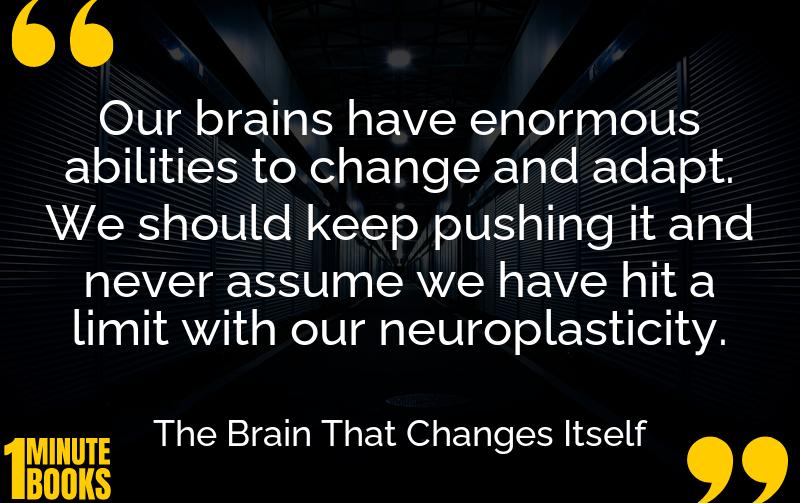
The Brain That Changes Itself explores neuroplasticity, the brain’s ability to change and adapt, enhancing learning, recovery from injury, and skills development.
Main Lessons
- Neuroplasticity is the brain’s ability to change, adapt, and form new neural connections.
- Even after a brain injury, persistent practice can lead to recovery beyond initial expectations.
- Dr. Paul Bach-y-Rita’s research showed how sensory experiences could be altered to accommodate disabilities.
- Addressing brain deficits can unlock new skills by strengthening interconnected neural networks.
- Barbara Arrowsmith developed an approach to change lives by stimulating brain functions.
- Environmental stimulation can lead to increased brain weight and neurotransmitter activity.
- The human brain is an open system, constantly adapting due to external influences.
- Humans possess highly adaptable brains compared to animals with instinctual behaviors.
- Our adaptable brains allow us to learn diverse skills, like farming or technology.
- The feedback loop between brain adaptation and environmental interaction is a continuous cycle.








